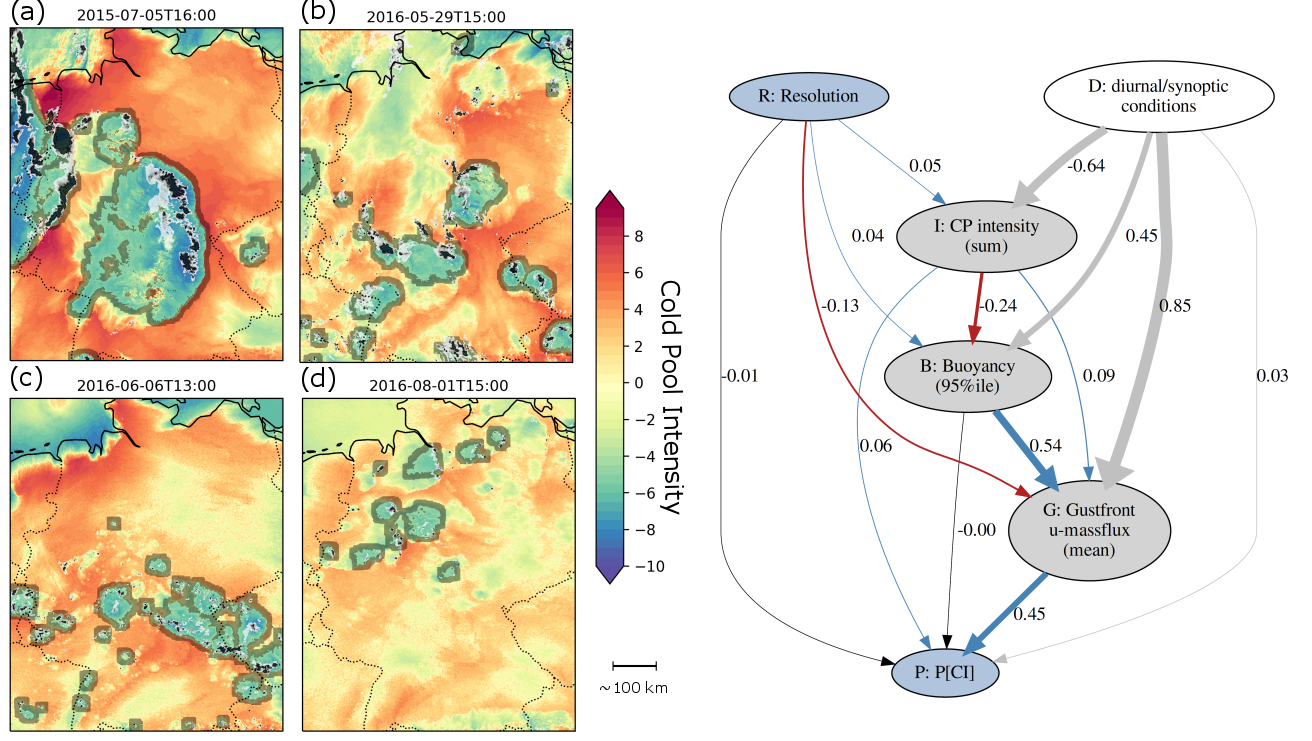Cold pool driven convective initiation: using causal graph analysis to determine what models are missing
01.07.2020

Cold pool driven convective initiation: using causal graph analysis to determine what models are missing.
Hirt, M., Craig, G.C., Schäfer, S.A.K., Savre, J. and Heinze, R.
Convective cold pools are volumes of negatively buoyant air that originate from precipitating downdraughts. Evaporation of precipitation in the sub-cloud layer creates negative buoyancy and accelerates the downdraught. When these cold, moist air masses hit the surface, they spread in near-circular patterns, often led by a gust front, where lifting fosters the initiation of new deep convection (i.e. thunderstorms).
Cold pools are essential for organizing convection and play a particular role in convective initiation in the afternoon and evening. Both aspects are deficient in current convection-permitting models and a better understanding and representation of cold pools is likely necessary to overcome these deficiencies.
In a recent publication (Hirt et al., 2020), we detected cold pools and convective initiation within hectometer simulations for four days over Germany (ICON-LEM, HDCP2 simulations) and identified several sensitivities of cold-pool-driven convective initiation to model resolution. Mostly, cold pools are more frequent, smaller and less intense in lower-resolution simulations and their gust fronts are weaker and less likely to trigger new convection. Using a causal graph analysis, we were able to estimate the relevance of several indirect effects, as displayed in the figure.
We identify one single dominant pathway (the RGP path): a reduced model resolution (R) directly causes gust front upward massflux (G) to be weaker which then also reduces convective initiation (P). Pathways involving cold pool intensity or buoyancy anomaly were found to be unimportant. It is particularly the cold pool gust fronts that are too weak in km-scale models to trigger sufficient, new convection.
This gained understanding can now help in developing a cold pool parameterization scheme to reduce the identified deficits in the models.
Reference
Hirt, M., Craig, G.C., Schäfer, S.A.K., Savre, J. and Heinze, R. (2020), Cold pool driven convective initiation: using causal graph analysis to determine what convection permitting models are missing. Q J R Meteorol Soc. doi:10.1002/qj.3788

